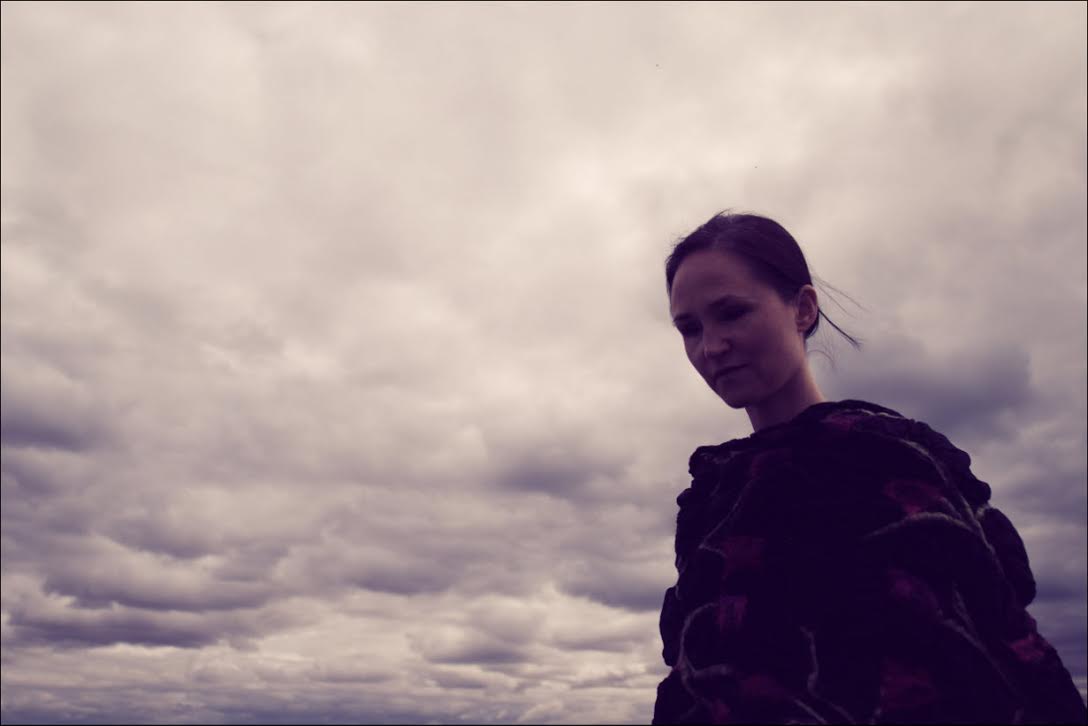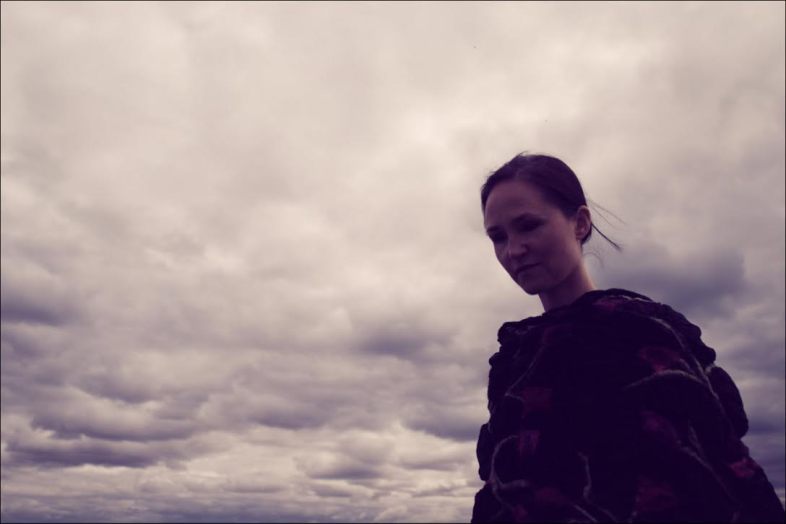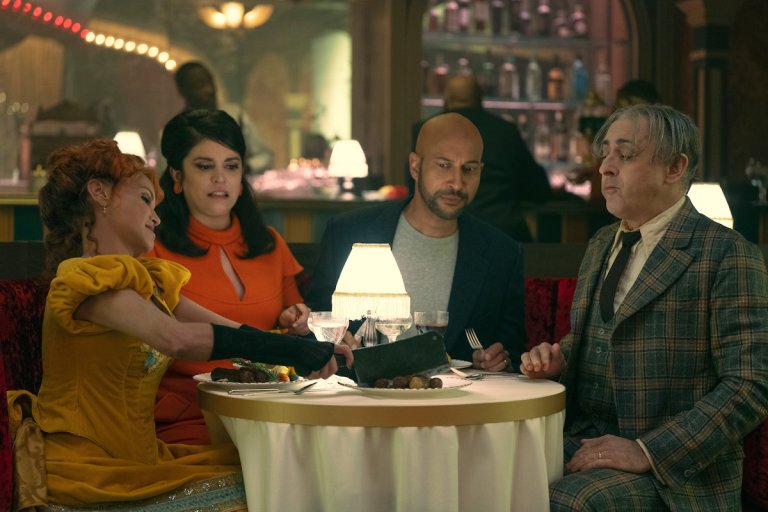Music For Writers: Anna Thorvaldsdottir’s Light Air Of Restraint
A master of tension in music, Iceland's Anna Thorvaldsdottir talks about a "sound world" influenced by her Icelandic heritage. You'll hear it in Music For Writers.


‘To Perform The Audio Visually’
As you’ll know if you’ve been following our Music for Writers series here at Thought Catalog, we seem to be in a golden era of new composition in contemporary classical music. And while New York City is generally recognized as the world center of this robust moment in musical development, there are several other key hubs.
 One is Reykjavik, the seat of the “Icelandic school” of singularly influential composition. There, for example, are Ólafur Arnalds; Daniel Bjarnason (one of my favorites, for his relentlessly concentrated Solaris with Ben Frost); Bjork, of course; Jóhann Jóhannsson; Valgeir Sigurðsson, a founder of the Bedroom Community label and collective, and known for his work with Sigur Rós and others; the widely popular Jón Þór “Jónsi” Birgisson; and his partner Alex Somers. The American Nico Muhly is closely associated with the Icelandics, having been recorded by Bedroom Community at the beginning of his career. You can guess at influences on his work right through his evocation of the Internet’s vast scale in Two Boys, his opera based in social media.
One is Reykjavik, the seat of the “Icelandic school” of singularly influential composition. There, for example, are Ólafur Arnalds; Daniel Bjarnason (one of my favorites, for his relentlessly concentrated Solaris with Ben Frost); Bjork, of course; Jóhann Jóhannsson; Valgeir Sigurðsson, a founder of the Bedroom Community label and collective, and known for his work with Sigur Rós and others; the widely popular Jón Þór “Jónsi” Birgisson; and his partner Alex Somers. The American Nico Muhly is closely associated with the Icelandics, having been recorded by Bedroom Community at the beginning of his career. You can guess at influences on his work right through his evocation of the Internet’s vast scale in Two Boys, his opera based in social media.
And then there’s Anna Thorvaldsdottir. If Iceland had produced no one else, we’d be in its debt for her work. It’s no wonder that she’s one of the new season of five artists (as is the excellent Muhly) chosen for Nadia Sirota’s and Alexander Overington’s Q2 Music Meet the Composer series.
Thorvaldsdottir is our featured composer this week, as her new album, In The Light Of Air is released on Friday by Sono Luminus. Thanks to the good work of New York Public Radio’s Q2 Music and its Album of the Week series, we’re able to call your attention to this work, which Elena Saavedra Buckley writes (she’s correct) involves “cacophonous spaces.”
Thorvaldsdottir’s work, for writers, is as rich as a volcanic plain — bleak only if you want it to be. Fortify yourself for its wide-eyed stare across an expanse of questions: you’ll find your characters’ loneliest moments here, your plots’ timeliest mysteries, and your own most eloquent misgivings. You’ll get whispers of styles from aesthetic characters as diverse as John Luther Adams and film composer Craig Armstrong.
The album is a departure of sorts for Thorvaldsdottir, whose typical forces are much larger than the small command unit dispatched here by the International Contemporary Ensemble (ICE) for which the piece was written. ICE can field as many as 35 lead players when required. But here, Thorsvaldsdottir’s exercise is for only five musicians — Kyle Armbrust, viola; the articulate cellist Michael Nicolas; Nuiko Wadden, harp; Cory Smythe, piano; and a strikingly precise Nathan Davis (a composer, himself) on percussion — are the bringers of all Thorvaldsdottir’s sound this time, exploring her shadowy, meditative depth.
These five intensely focused players have achieved a lot of intimacy with their composer and with each other to produce this kind of densely integrated, and starkly restrained work.
Anna Thorsvaldsdottir
And restraint is the key to the regal quality of light and air you hear in Thorvaldsdottir’s work. She is a quiet spirit of her time. Nothing runs away with you here, even when Smythe has the wide-chord elegance of some of her most memorable writing for piano yet. And when percussionist Davis’ work suddenly tumbles into the hollow gourd-resonance of the Klakabönd “ornaments” that artist Svana Jósepsdóttir created as a practical installation for performance of In The Light Of Air, he holds it together: he’s pouring on tension, tightly lensed.
Thorvaldsdottir’s music is always strangely an experience of resolution for me. There’s an inevitable air of a gathering, a sense of bringing together things that need to be examined, sorted, put either to rest or at least into their proper places. Like a story of understanding, of recognition, these dark ruminations are never about confusion or despair as much as they’re about acceptance and recognition. You feel more complete at the end of one of her works, more whole. You feel sorted, as if the raw materials of her work have been your worries, your needs, your longings, not hers.
So it’s a special treat to hear Thorsvaldsdottir render her voice in such a refined, compressed company of artists. And the very economy that’s about to unnerve you when you hear this work is where I started when I was in touch with the composer for our interview.
I’ll embed a Vimeo of the ICE players working In The Light Of Air here at the Museum of Contemporary Art in Chicago in April.
[vimeo 128383941 w=500 h=281]
‘Listen For The Textures’
Thought Catalog: Anna, I wonder if I could ask where In the Light of Air stands in your body of work for you? Your previous work has normally used a larger ensemble and some very big sounds. I’m thinking of Aeriality, for example, and Trajectories. In working with a smaller ensemble as you’ve done here with the ICE players, what adjustments of your aesthetic voice come into play?

Anna Thorvaldsdottir: I really like writing for larger ensemble and orchestra, but I also very much enjoy writing for smaller ensemble as well. The musical voice inevitably resonates differently when writing for larger ensembles or smaller, so I don’t really think about it as adjustments to my aesthetic voice but rather a different experience – that is, when I am dreaming on music for a smaller ensemble the textures require different things so I listen for the textures in the individual instruments rather than ways to collectively structure them into textures.
I do enjoy a lot working with instruments that have the capacity to create sound textures and chords, which is why the selection of instruments is what it is in In the Light of Air. This allows me to work with textures in the setting of a smaller ensemble.
TC: Am I right that I’m hearing your percussion better in this smaller construct? Maybe not “better” but with more relief, more exposed? It stands out more sharply for me as Nathan works his way through the score. Is this happening simply because there are fewer other orchestral forces in competition with the percussive moments? Or have you deliberately heightened the percussive elements this time?
AT: In In the Light of Air there are only five instruments and electronics and each instrument has both the role of a soloist as well as serving as an accompaniment. I tend to write music where the instruments are gradually drawn in and out of focus individually and collectively, which I did in this work. The same goes for percussion. That is, it becomes a solo instrument at times and at other times is drawn into the background.
Perhaps this is where the use of percussion in particular differs from the use in the larger ensemble works where the percussion is often perhaps more of a textural tool in the whole “image” rather than a soloistic instrument – but that could also be said about the other instruments as well I guess…
TC: Speaking of percussion, piano has always been one of your classiest signature voices. But in the case of what Cory is doing in this recording, it seems at times to take on more life of its own — maybe I mean it seems a bit more proactive. I feel I hear this, for example, in the opening of the third movement, “Existence,” and in these aching open-chords in “Remembrance,” so beautiful. I feel the piano leads us in this fourth movement, taking us to that melody (I think the one from your husband) before being overtaken by Svana’s Klakabönd. Does this work live a little more closely to the keyboard for you than some of your other compositions have?
AT: In the case of the piano, I wanted to combine the sound world of performing on the inside of the instrument to the more lyrical material performed on the keyboard to make use of the spectrum of the instrument. It became very natural to do that in this work, both because the piece is relatively long so working meticulously with the material became very important, and also because I wanted to write the piece specifically for the performers of ICE so I drew inspiration by them individually as performers.
TC: I’ve come over the years to think of you, too, as a kind of master of tension — and this is a big compliment, by the way. There’s such an unsettling, visceral sense of foreboding to the dynamics and textures, and you sustain a shadow of meditation over a piece’s performance time. And yet I wonder if the smaller ensemble doesn’t give this work more intimacy. Can you tell us about the title and its concept? I’ve been to Reykjavik and the light there is very special. How does light come to be the metaphor for this studied work?
AT: Warm thanks. I have always been interested in the visual aspect of a live performance and one of my first ideas for In the Light of Air was to have a light constellation as one of the “instruments” in the work during live performances. I wanted to have several lights that would be cued by the performers’ breaths and instrumental performance and to have the lights subtly “perform” the audio visually. We structured this and it creates a subtle visual layer to the work that is directly connected to the audio source in the music, and this is where the title is drawn from.
I definitely think that the light in Iceland is very special as well, and I’m sure that the inspiration from home is shining through there with the dark space and the subtle lights pulsating slowly to the music, but I wasn’t actively thinking about this when I was writing the work.
Anna Thorvaldsdottir
TC: To help our authors grasp what you do, can you say something about what is “Icelandic” in your work? Mind you, it’s obviously international in its appeal — here I am, after all. But there’s something that to my mind is a kind of spaciousness, maybe a sensitivity to continuity, that’s a kind of trademark. Is there a way to characterize what you think is essential in your and your colleagues’ sound-world?
AT: It can be quite difficult to analyze yourself with regard to your roots – at least that’s the way it is for me. I can only speak for myself on this, but I am definitely influenced – at least on a fundamental, sub-conscious level – by the sense of spaciousness and closeness to nature I experience here in Iceland.
It is not so much that I am actively thinking about or analyzing the Icelandic aspect of myself when I am working, but these things do help me a lot to find the music. The way that the inspiration from Nature then finds its way into my music is primarily through elements of proportion and natural flow. I don’t strive to portray the actual sounds heard in nature, or “project” it as such, but rather to allow it to inspire.
This is also where I find the inspiration for perspectives and the shift in focus between the details and the entire sound world in the music. ![]()




